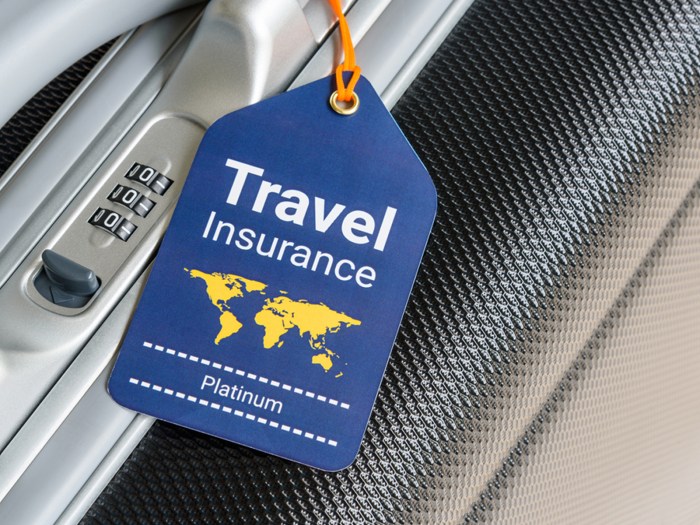Planning a trip, whether a backpacking adventure across Southeast Asia or a luxurious cruise through the Caribbean, requires meticulous preparation. One crucial element often overlooked is travel insurance. This guide delves into the nuances of selecting the best trip insurance, exploring factors ranging from individual needs and coverage options to reputable providers and the claims process. Understanding these aspects ensures peace of mind and protects your investment in your journey.
From budget-conscious backpackers to families traveling with young children and luxury travelers seeking premium coverage, the ideal travel insurance policy varies greatly. This guide clarifies the complexities of choosing the right coverage, considering factors like destination risk, trip length, and pre-existing medical conditions. We will examine different policy types, highlight crucial coverage components, and provide a framework for selecting a trustworthy insurance provider.
Coverage Options and Their Importance

Choosing the right travel insurance policy involves understanding the various coverage options and their importance in protecting your trip investment and well-being. A comprehensive policy goes beyond basic medical coverage, offering a safety net against a wide range of unforeseen circumstances. The specific components you need will depend on your trip’s nature, destination, and personal circumstances.
Medical Evacuation and Repatriation of Remains
Medical evacuation coverage is crucial for situations requiring urgent medical transport from a remote location or a country with inadequate medical facilities. This can involve air ambulance transport to a hospital with better resources. Repatriation of remains, sadly, covers the costs associated with returning the body of an insured person to their home country in the event of death while traveling. The costs involved in such situations can be substantial, easily exceeding tens of thousands of dollars. For example, a serious accident in a remote mountain region might necessitate a costly helicopter evacuation to a major city hospital. Similarly, the process of transporting remains internationally involves significant logistical and financial burdens.
Trip Cancellation/Interruption Insurance
Trip cancellation insurance reimburses prepaid, non-refundable trip expenses if you must cancel your trip due to covered reasons such as a serious illness, severe weather, or family emergency. Trip interruption insurance covers additional expenses incurred if your trip is unexpectedly cut short due to similar covered reasons. These coverages are particularly valuable for meticulously planned trips with significant upfront costs. Consider a scenario where a hurricane forces an early return home; trip interruption insurance would help cover the costs of a new flight and potentially accommodation. Cancelling a non-refundable cruise due to a sudden illness would similarly be alleviated by trip cancellation coverage.
Baggage Loss/Delay Coverage
Baggage loss or delay coverage compensates you for the loss or significant delay of your checked baggage. This coverage can reimburse you for the cost of essential items you need to purchase while waiting for your luggage to arrive. It can also cover the cost of replacing lost items. Imagine arriving at your destination only to find your luggage hasn’t made the flight. Baggage delay insurance would help you purchase necessary toiletries and clothing until your bags are located. If your luggage is lost permanently, the coverage can help replace your belongings.
- Medical Evacuation Coverage: Crucial for serious illness or injury in remote areas or countries with limited medical facilities.
- Repatriation of Remains: Essential for covering the substantial costs associated with returning a deceased traveler’s body home.
- Trip Cancellation/Interruption Insurance: Vital for protecting against financial losses due to unforeseen circumstances necessitating trip cancellation or early return.
- Baggage Loss/Delay Coverage: Important for mitigating the inconvenience and expense of lost or delayed luggage.
Factors Affecting Insurance Premiums

The cost of travel insurance isn’t a fixed amount; it varies significantly based on several interconnected factors. Understanding these influences allows travelers to make informed decisions and find the most suitable and affordable coverage for their needs. This section will detail the key factors that determine your trip insurance premium, highlighting their relative importance and illustrating the potential cost differences.
Destination Risk Level
The inherent risks associated with your travel destination heavily influence the premium. Destinations with higher risks of political instability, natural disasters, health epidemics, or crime will command higher premiums. For example, a trip to a region with frequent earthquakes or a history of civil unrest will be more expensive to insure than a trip to a stable, low-risk country. Insurance companies assess risk based on historical data, current geopolitical situations, and local infrastructure. A trip to a remote area with limited medical facilities will also typically result in a higher premium compared to a trip to a major city with readily available healthcare.
Trip Duration
The length of your trip is directly proportional to the risk. Longer trips inherently expose you to a greater chance of unforeseen events. A week-long vacation carries a lower risk profile than a three-month backpacking adventure. Insurance companies factor in the increased probability of incidents over extended periods, leading to higher premiums for longer trips. For instance, a one-week trip to Europe might cost $50 while a three-month backpacking trip through Southeast Asia could cost $500 or more, reflecting the increased duration and potential for complications.
Traveler’s Age
Age significantly impacts insurance costs. Older travelers generally face higher premiums due to an increased likelihood of health issues requiring medical attention. This is based on actuarial data showing a higher incidence of health problems in older age groups. A 30-year-old might pay significantly less for the same coverage than a 70-year-old, reflecting the statistically higher risk associated with older age. The age brackets used for premium calculation vary between insurers but generally reflect age-related health risks.
Pre-existing Conditions
Pre-existing medical conditions are a major factor influencing both premium costs and coverage. Insurers may require additional medical questionnaires or charge higher premiums to cover individuals with pre-existing conditions. Some pre-existing conditions might even be excluded from coverage altogether. For example, someone with a history of heart problems might find it more expensive to obtain comprehensive travel insurance, or might only be able to secure coverage with specific limitations or exclusions related to their condition. The severity and type of pre-existing condition play a crucial role in determining the impact on premium and coverage.
Choosing a Reputable Provider

Selecting the right travel insurance provider is crucial for ensuring your peace of mind and the effectiveness of your coverage. A reputable company offers not only comprehensive plans but also reliable claims processing and excellent customer service. Choosing poorly can leave you vulnerable during unexpected travel disruptions.
Choosing a reputable travel insurance provider involves careful consideration of several key factors. Understanding a company’s financial strength and its track record in handling claims are paramount to ensuring you receive the promised coverage when you need it most.
Evaluating Financial Stability and Reputation
Assessing a travel insurance provider’s financial stability involves examining their financial ratings and history. Look for companies with high ratings from independent rating agencies like A.M. Best or Standard & Poor’s. These agencies assess the insurer’s ability to pay claims based on factors like their capital reserves, underwriting performance, and overall financial health. A high rating signifies a lower risk of the company becoming insolvent and unable to fulfill its obligations. Additionally, research the company’s history, looking for any significant negative press or regulatory actions. A history of promptly paying claims and resolving customer disputes favorably is a strong indicator of reliability.
Verifying Claims-Paying History and Customer Service Ratings
Independent review sites and customer feedback platforms offer valuable insights into a company’s claims-paying history and customer service quality. Websites like Trustpilot, Yelp, and the Better Business Bureau often contain reviews from past customers detailing their experiences with claims processing and customer support. Pay close attention to both positive and negative reviews, looking for patterns or recurring themes. For example, a consistent pattern of complaints about slow claim processing or unresponsive customer service should raise concerns. You can also search for news articles or online forums discussing the insurer’s reputation and handling of claims. The more positive feedback and fewer negative experiences reported, the better.
Importance of Reading Policy Documents Carefully
Before purchasing any travel insurance policy, it is essential to thoroughly review the policy document. This document Artikels the specific terms and conditions of your coverage, including what is covered, what is excluded, and the claim process. Pay close attention to the definitions of covered events, limitations on coverage amounts, and any waiting periods. Understanding these details will help you make an informed decision and avoid unexpected surprises if you need to file a claim. Don’t hesitate to contact the insurance provider directly if you have any questions or need clarification on any aspect of the policy.
Checklist for Selecting a Travel Insurance Provider
Before making a purchase, use this checklist to help you evaluate potential providers:
- Check the insurer’s financial strength rating from reputable agencies.
- Review customer reviews and testimonials on independent platforms.
- Carefully read the policy document, paying attention to exclusions and limitations.
- Compare coverage options and premiums from multiple providers.
- Verify the provider’s licensing and regulatory compliance in your jurisdiction.
- Assess the ease of contacting customer service and the responsiveness of their representatives.
Filing a Claim
Filing a travel insurance claim can seem daunting, but understanding the process and gathering the necessary documentation beforehand can significantly expedite the resolution. A prompt and organized approach is key to a successful claim. Remember to always refer to your specific policy documents for detailed instructions and requirements.
The Step-by-Step Claim Filing Process
The claim process generally involves several key steps. First, report the incident as soon as reasonably possible after it occurs. This is crucial for preserving evidence and initiating the investigation. Next, gather all necessary documentation, which will vary depending on the type of claim. Finally, submit your claim through the designated channels provided by your insurer, often online or via mail. They will then review your documentation and evidence, and inform you of their decision.
Required Documentation and Evidence
Supporting your claim with comprehensive documentation is paramount. This typically includes a copy of your travel insurance policy, a detailed description of the incident, and any relevant supporting documentation such as medical bills, police reports, flight cancellation confirmations, or lost luggage reports. For medical claims, you’ll need detailed medical records, including diagnoses and treatment plans. For lost luggage claims, you’ll need the baggage claim tag and a description of the lost items, along with any police report filed. The more thorough your documentation, the smoother the claims process will be.
Effective Communication with the Insurance Provider
Maintaining clear and consistent communication with your insurance provider is essential throughout the claims process. Respond promptly to any requests for additional information and keep records of all correspondence. Be polite and professional in your communication, clearly explaining the situation and providing any requested documentation promptly. If you encounter delays or have questions, proactively contact your provider to seek clarification. Regular follow-up can help prevent unnecessary delays and ensure a timely resolution.
Claim Filing Procedure Flowchart
Imagine a flowchart with the following boxes and connecting arrows:
Box 1: Incident Occurs (e.g., medical emergency, flight cancellation, lost luggage). Arrow points to Box 2.
Box 2: Report Incident to Insurer Immediately. Arrow points to Box 3.
Box 3: Gather Necessary Documentation (Policy, Medical Records, Police Report, etc.). Arrow points to Box 4.
Box 4: Submit Claim (Online or Mail). Arrow points to Box 5.
Box 5: Insurer Reviews Claim and Documentation. Arrow points to Box 6.
Box 6: Insurer Notifies Claimant of Decision (Approval or Denial). Arrow points to Box 7.
Box 7: If Approved, Payment is Processed. If Denied, Claimant may appeal.
Final Review
Securing the best trip insurance is paramount for a worry-free travel experience. By carefully considering individual needs, comparing policy features, and selecting a reputable provider, travelers can confidently embark on their adventures. This guide provides a framework for informed decision-making, empowering travelers to make the best choice for their specific circumstances and budget, ultimately ensuring a smooth and memorable journey.
FAQ Summary
What is the difference between comprehensive and basic trip insurance?
Comprehensive policies offer broader coverage, including medical emergencies, trip cancellations, lost luggage, and more. Basic policies typically cover only essential aspects, such as emergency medical expenses.
Can I get trip insurance if I have pre-existing medical conditions?
Yes, but coverage may be limited or require additional disclosures and potentially higher premiums. It’s crucial to disclose all pre-existing conditions honestly when applying.
When should I purchase trip insurance?
Ideally, purchase trip insurance as soon as you book your trip, or at least within a specified timeframe as Artikeld by the insurer’s policy. Waiting too long may limit your coverage or even exclude certain events.
What documents do I need to file a claim?
Typically, you’ll need proof of purchase for the trip (flights, accommodation), medical records (if applicable), police reports (for lost luggage or theft), and detailed descriptions of the events leading to the claim.
How long does it take to process a claim?
Processing times vary depending on the insurer and the complexity of the claim. It’s advisable to contact the insurer promptly and follow up regularly for updates.